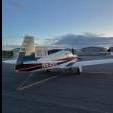Leadville (KLXV) in an NA Mooney?
-
Members Online
- pkellercfii
- redbaron1982
- bazerk007
- jrwilson
- geoffb
- sdmideas
- Blaze
- TCC
- bbingaman
- 65MooneyPilot
- BadMooneyRising
- Stubby
- Wingover
- ohdub
- 231DF
- Justin Schmidt
- DonMuncy
- Aaviationist
- Deb
- NickG
- PT20J
- 1980Mooney
- SKI
- DanM20C
- GeeBee
- jlunseth
- Bolter
- Utah20Gflyer
- Nikolai
- Paul Thomas
- DMM
- drstephensugiono
- ElkoRandy20J


Recommended Posts
Join the conversation
You can post now and register later. If you have an account, sign in now to post with your account.